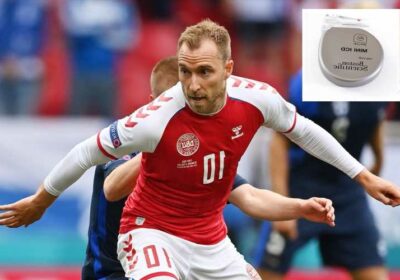What is an ICD implant for the heart?

FOOTBALLER Christian Eriksen will be fitted with an implantable cardioverter defibrillator following his cardiac arrest.
The device can be life-saving, but what is it?
An implantable cardioverter defibrillator or ICD is a small device the size of a matchbox placed under the skin, usually just below the collar bone.
It's there for life and people with one can still safely play competitive sports or exercise, but doctors may give tailored advice to patients.
The ICD is used to treat dangerously abnormal heart rhythms.
The revolutionary device works like a mini defibrillator to keep the heart in check.
With each heartbeat there is an electrical signal that causes the heart to contract and pump blood.
But, in some people that doesn't happen properly.
An abnormal heart rhythm or arrhythmia is where the heart can beat too slowly, too fast or in an irregular way.
In some cases an arrhythmia can cause sudden cardiac death, which kills 100,000 people in the UK every year.
Eriksen suffered a cardiac arrest during Denmark’s Euro 2020 game against Finland on June 12.
He collapsed as he was about to receive a throw-in to the shock of millions of viewers before medical assistance immediately arrived to give him CPR.
Onlookers sobbed as the player was resuscitated live on air.
Eriksen was taken off the pitch awake and later confirmed stabilised and has been in hospital since.
Eriksen has agreed with the recommendation by specialists in Copenhagen to have an ICD.
A statement from the Danish Football Association read: “National team doctor Morten Boersen has been in contact with the cardiac specialist … and Christian Eriksen and this is the latest.
“After Christian has been through different heart examinations it has been decided that he should have an ICD (heart starter).
"This device is necessary after a cardiac attack due to rhythm disturbances.”
One of the most common causes of a cardiac arrest is a life-threatening abnormal heart rhythm, according to the British Heart Foundation (BHF).
Eriksen has been having complex scans of his heart to determine if there are any problems with it that may have caused the cardiac arrest.
But it is not clear yet why he had a cardiac arrest.
Retired footballer Fabrice Ndala Muamba was also fitted with an ICD after his cardiac arrest on March 17 2012, during the FA Cup quarter-final match between Bolton and Tottenham Hotspur.
Eriken's cardiac arrest due parallels with Muamba's – whose heart stopped beating independently for 78 minutes amid horrifying scenes at Spurs’ White Hart Lane.
Several other European players are known to wear ICDs on the pitch, with it being the first line of treatment after cardiac arrest.
The ICD is battery powered and lasts about six to ten years.
Thin wires connect the ICD to the heart, where it constantly checks heart rate and rhythm.
It isn't too different from a pacemaker – another device placed in the body to keep a heart with a slow or irregular beat running at the proper speed
An ICD, however, can treat a dangerous rhythm in various ways:
1. Pacing – a series of low-voltage electrical impulses at a fast rate to try and correct the heart rhythm
2. Cardioversion – one or more small electric shocks to try and restore the heart's normal rhythm
3. Defibrillation – one or more larger electric shocks to try and restore the heart's rhythm.
An ICD is fitted under local anaesthetic and with sedation and the operation takes around one and three hours.
Studies have shown ICDs to have a role in preventing cardiac arrest in high-risk patients.
People may be given one if they have survived a cardiac arrest, have had a heart attack, have a congenital heart disease or an arrhythmia.
Source: Read Full Article




